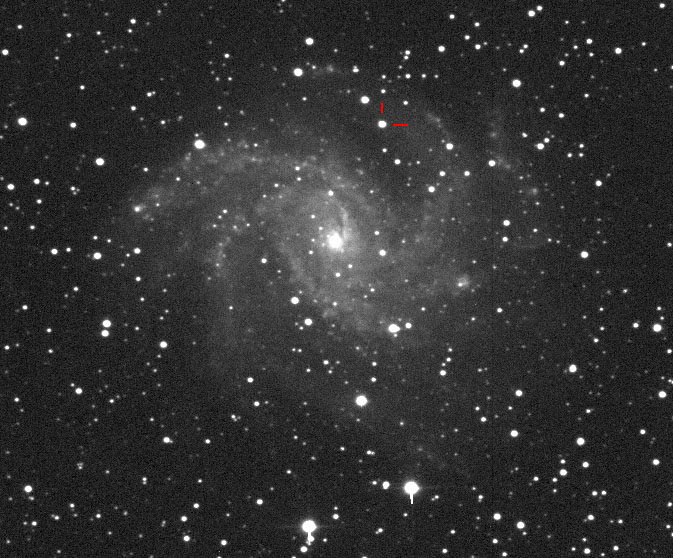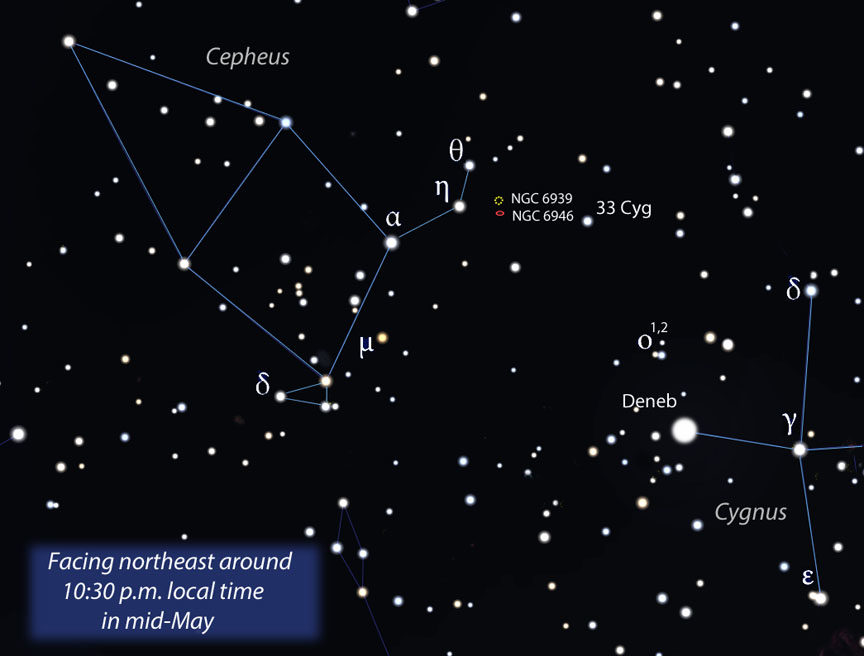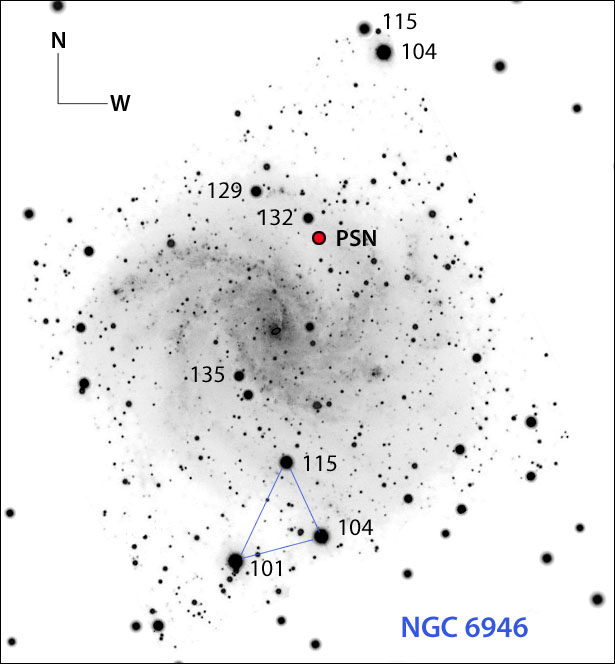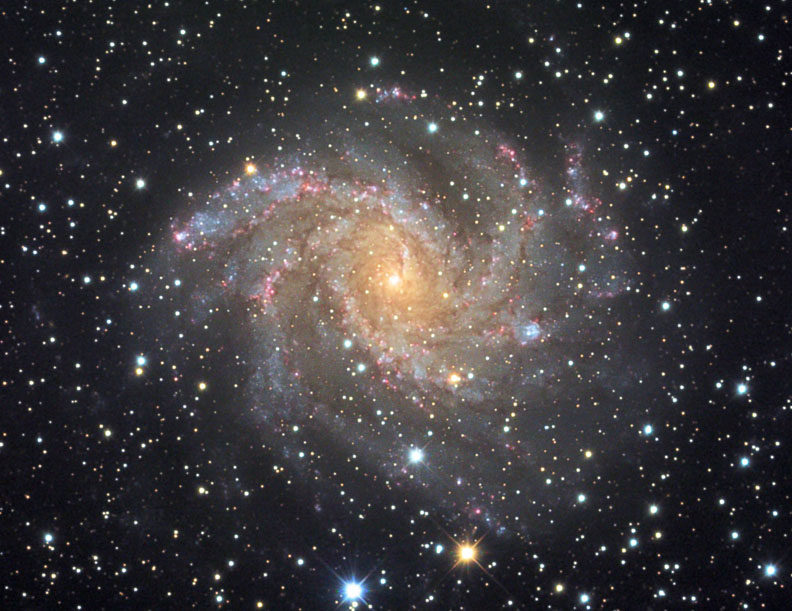
© Gianluca MasiNew possible supernova AT 2017eaw is shown at the tick marks. The object is located about 2 minutes northwest of the the galaxy's center. The galaxy got its "Fireworks" nickname for all its supernovae. More supernovae have now been discovered here than in any other single galaxy.
Last night, Utah amateur
Patrick Wiggins discovered a possible bright supernova in the spiral galaxy
NGC 6946 in Cygnus.
If confirmed, AT 2017 eaw will become the 10th supernova found in this explosion-rich galaxy in the past century, reaffirming its reputation for fireworks of the grandest kind.It was Wiggins' third supernova, and he found it by comparing a CCD image made on May 14.24 UT through his 0.35-m f/5.5 reflector near Erda, Utah with one taken several years ago and another from May 12. Nothing showed on either image, leading him to suspect a supernova.
To be sure, he watched the new object for over an hour to see if it moved. Faint asteroids have masqueraded as supernovae before, but this one didn't budge. Italian astronomer Gianluca Masi did a check for known asteroids in the vicinity and none were listed. For the moment then, it appears we have a brand new stellar blowup in our night sky.
Through a combination of good fortune and hard work, Wiggins happened to catch the star during the early stage of the blast. He estimated its magnitude at +12.8. Others have since confirmed the discovery and pinned the star's brightness at +12.6, bright enough to spot in telescopes as small as 6-inches!
The new possible supernova (PSN) is located 61″ west and 143″ north of the galaxy's nucleus at R.A. 20h 34′44.24″, Dec. +60°11′ 35.9″ not far from two stars of similar brightness indicated on the map. Although spectra have yet to confirm whether it's a Type Ia (white dwarf detonation) or Type II (a massive star collapsing and exploding), Wiggins' early catch likely means that AT 2017eaw will almost certainly continue to brighten.

© StellariumNGC 6946, located at the border of Cygnus and Cepheus within a degree of the open cluster NGC 6939, climbs into the northeastern sky for easy viewing on May evenings. The galaxy shines at magnitude +9.5 in a rich star field and forms a nifty triangle with η and θ Cephei. Once you've found the galaxy in your telescope, use the map below to star-hop to the supernova.
During the last supernova blast in 2008,
SN 2008S hovered around magnitude +16 at best; the brightest explosion occurred in 1980 when SN 1980K peaked around magnitude around +11.4. Wouldn't that be nice if it happened again? Timing's perfect for viewing the star. By 10:30 p.m. local time from mid-northern latitudes, the galaxy is already 25° up in the northeastern sky, and the Moon doesn't rise till after midnight.

© Map: Bob King, Source: StellariumYou can use the bright triangle of stars on the southeastern edge of the galaxy to point you to the possible supernova (PSN) on the opposite side of NGC 6946. Star magnitudes are shown with the decimal omitted. North is up, west to the right. Click to enlarge and print out.
I'll have additional news as it arrives in my e-mail. You can also check David Bishop's excellent
Latest Supernovae site for fresh updates. Congratulations to Patrick! He joins a long line of Fireworks Galaxy supernovae discoverers including American astronomer
George Ritchey, inventor of the
Ritchey - Chrétien telescope design, who uncovered the first stellar blast in the galaxy, SN 1917A, on July 19, 1917 and got the ball rolling.

© Jim MistiNGC 6946 is well-known to amateur astronomers. The magnificent pinwheel (type Sc spiral) is located 22 million light years from Earth and was discovered by William Herschel in 1798. Clear skies and happy supernova hunting!







Reader Comments
to our Newsletter